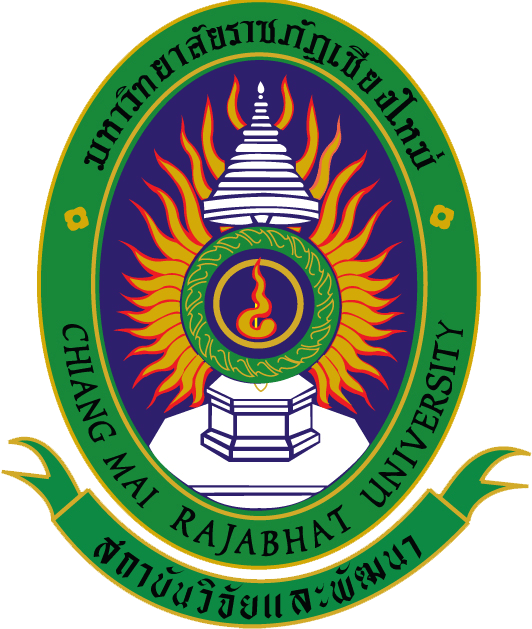
ระบบสารสนเทศงานวิจัย สถาบันวิจัยและพัฒนา มหาวิทยาลัยราชภัฏเชียงใหม่
Research Information System(RIS)
การวัดสมรรถนะของผลิตภัณฑ์ชุมชนในการจัดการห่วงโซ่อุปทานอย่างยั่งยืน
อาจารย์อธิวัฒน์ วังใหม่
คณะวิทยาศาสตร์และเทคโนโลยี
คำสำคัญ :
เลขทะเบียน :
1489-64-SCI-CMRU
บทคัดย่อ
งานวิจัยนี้มีวัตถุประสงค์เพื่อสร้างรูปแบบและวัดสมรรถนะการจัดการห่วงโซ่อุปทานอย่างยั่งยืนของผลิตภัณฑ์ชุมชน และสร้างรูปแบบการให้ข้อเสนอแนะในการปรับปรุงสมรรถนะกิจกรรมของการจัดการห่วงโซ่อุปทานอย่างยั่งยืนของผลิตภัณฑ์ชุมชน โดยมีการเก็บข้อมูลพื้นฐานของสถานประกอบการผลิตภัณฑ์ชุมชนในพื้นที่ชุมชนบ้านปงไคร้ ตำบลโป่งแยง อำเภอแม่ริม จังหวัดเชียงใหม่ จากนั้นสร้างรูปแบบการวัดสมรรถนะการจัดการห่วงโซ่อุปทานอย่างยั่งยืนจากการทบทวนวรรณกรรมและคำแนะนำจากผู้เชี่ยวชาญ ทำการวัดสมรรถนะของการจัดการห่วงโซ่อุปทานอย่างยั่งยืนของผลิตภัณฑ์ชุมชน โดยพิจารณาในด้านเศรษฐกิจ สังคม และสิ่งแวดล้อม และคัดเลือกกิจกรรมของโซ่อุปทานของผลิตภัณฑ์ชุมชนอย่างน้อย 1 แห่ง ในพื้นที่เป็นกรณีศึกษาเพื่อดำเนินการให้ข้อเสนอแนะในการปรับปรุงสมรรถนะเพื่อให้เกิดความยั่งยืน
การเก็บข้อมูลพื้นฐานของสถานประกอบการกลุ่มผลิตภัณฑ์ชุมชนในพื้น และคัดเลือกตัวชี้วัดทั้ง 3 ด้าน ด้านเศรษฐศาสตร์ ด้านสิ่งแวดล้อม และด้านสังคม โดยใช้แบบประเมิน 2 ชุด คือ แบบประเมินสอบถามความเหมาะสมของตัวชี้วัด และแบบสอบถามระดับน้ำหนักความสำคัญของตัวชี้วัด จากนั้นทำการพัฒนาแบบวัดสมรรถนะการจัดการห่วงโซ่อุปทานอย่างยั่งยืนของผลิตภัณฑ์ชุมชน ซึ่งแบบวัดสมรรถนะการจัดการห่วงโซ่อุปทานอย่างยั่งยืนของผลิตภัณฑ์ชุมชนที่ทำ
การพัฒนาขึ้นตามตัวชี้วัดหลักทั้ง 3 ด้าน ประกอบด้วยตัวชี้วัดรองทั้งหมด 21 ตัวชี้วัด แต่ละตัวชี้วัดมีค่าน้ำหนักความสำคัญ เช่น การตอบสนองต่อการเปลี่ยนแปลงคำสั่งซื้อ มีค่าน้ำเท่ากับ 0.013 เวลาในการส่งมอบ มีค่าน้ำเท่ากับ 0.030 กำลังการผลิต มีค่าน้ำเท่ากับ 0.016 ฯลฯ ซึ่งจะถูกนำไปวิเคราะห์ร่วมกับคะแนนประเมิน แต่ทั้งนี้ในส่วนของตัวชี้วัด รายได้สุทธิ ต้นทุนการดำเนินงาน และต้นทุนพนักงาน จะนำไปวิเคราะห์เปรียบเทียบกับผลการดำเนินงานที่ผ่านมา ในรูปแบบ SCOR Model (ตารางที่ 5.1) ซึ่งจากการประเมินสมรรถนะการจัดการห่วงโซ่อุปทานของผลิตภัณฑ์ผักเชียงดา
ชุมชนตำบลโป่งแยง อำเภอแม่ริม จังหวัดเชียงใหม่ โดยประเมินจากผู้ที่มีส่วนเกี่ยวของกับผลิตภัณฑ์ จากค่าคะแนนการประเมินเฉลี่ยที่ได้จะนำมาคูณถ่วงด้วยน้ำหนักของแต่ละตัวชี้วัดดังสูตรคำนวณค่าน้ำหนักแต่ละตัวชี้วัด พบว่า ผลิตภัณฑ์ชุมชนชาผักเชียงดานั้นมีค่าคะแนนถ่วงน้ำหนักที่ 2.78 เมื่อเทียบกับค่าคะแนนสมรรถนะการจัดการอย่างยั่งยืนในอุดมคติ (Idle Solution) ซึ่งมีค่า เท่ากับ 55.61% พบว่ามีค่าความยั่งยืนที่น้อยเป็นอย่างมาก
การสร้างรูปแบบการให้ข้อเสนอแนะในการปรับปรุงสมรรถนะกิจกรรมของการจัดการ
ห่วงโซ่อุปทานอย่างยั่งยืนของผลิตภัณฑ์ชุมชนจะนำค่าคะแนนถ่วงน้ำหนักมาจัดลำดับความสำคัญของตัวชี้วัดเพื่อประเมินความสำคัญและคัดเลือกแนวทางการดำเนินกิจกรรมที่เหมาะสมในการปรับปรุง โดยพิจารณาร่วมกับแนวโน้มของระดับความสำคัญของแต่ละตัวชี้วัดหลัก ซึ่งจากการประเมินผลิตภัณฑ์ชุมชนผักเชียงดา พบว่า ตัวขี้วัดรองด้านการอบรมพนักงานมีค่าคะแนนถ่วงน้ำหนักเท่ากับ 0.167 เมื่อเทียบกับค่า Idle Solution มีค่าเท่ากับ 0.404 ซึ่งมีค่าน้ำหนักที่มากที่สุดตามแนวทาง
การประเมิน หากชุมชนต้องการพัฒนาผลิตภัณฑ์ให้มีความยั่งยืนมากขึ้น โดยอาจเริ่มต้นจากการมุ่งเข้าสู่ระดับ 3 โดยดำเนินการจัดเตรียมหลักสูตรอบรมอย่างต่อเนื่อง มีแผนการอบรมตามกรอบเวลาที่ชัดเจนเพื่อให้บุคลากรสามารถพัฒนาองค์ความรู้ที่เกี่ยวข้องและเสริมสร้างศักยภาพในการจัดการองค์กรได้ ซึ่งหากดำเนินการเสร็จสิ้นก็สามารถพัฒนาบุคลากรให้มีความรู้และดำเนินการจัดอบรมหรือส่งบุคลากรไปอบรมเพื่อพัฒนาทักษะภายนอก เพื่อก้าวเข้าสู่ผลการประเมินในระดับที่ 4 และ 5 ต่อไป
Abstract
The Purpose of this research were to study the create a pattern and determine capability Sustainable Supply Chain Management of Community Products and create a pattern of giving a feedback for improving the activity performance of sustainable supply chain management of community products by collect basic data of Community product establishments in the Ban Pong Khai, Pong Yaeng Sub – District, Mae Rim District Chiang Mai province. After that build a sustainable supply chain management performance measurement model based on literature reviews and expert recommendations. Measure the performance of sustainable supply chain management of community products. by considering economic, social and environmental aspects and selected activities of at least one community product supply chain in the area as a case study in order to make suggestions on improving performance for sustainability.
The basic data collection of establishments of community product groups in the area and selected indicators for all 3 aspects of economics environmental and social aspects, using 2 sets of assessments, which are questionnaire questionnaire on the suitability of indicators; and a questionnaire on the level of importance of the indicators Then develop a sustainable supply chain management performance model for community products. The Sustainable Supply Chain Management Performance Scale of Community Products developed according to the 3 main indicators consists of 21 secondary indicators. Each indicator has a significant weight, such as response to change order the water value was 0.013. Delivery time has a water value of 0.030, production capacity has a water value of 0.016, etc., which will be analyzed together with the evaluation scores However, in terms of indicators, net income, operating costs and cost of employees will be analyzed and compared with past performance in the form of SCOR Model (Table 5.1). From the assessment of the capability of supply chain management of Chiangda vegetable products in Pong yaeng Sub-District, Mae Rim District Chiang Mai province by evaluating people who are involved with the product the average assessment scores obtained will be multiplied by the weight of each indicator as formula for calculating the weight of each indicator. The ideal sustainable management performance score (Idle Solution), which is equal to 55.61%, found that the sustainability value is very low.
Creating feedback and improving capability about activities of management Sustainable supply chains of community products will use weighted scores to prioritize indicators in order to assess their importance and select appropriate action methods for improvement. Taking into account the trend of the importance of each key indicator from the assessment of Chiangda vegetable community products, it was found that the weighted score of the secondary measures in employee training was 0.167 compared to the Idle Solution value of 0.404, which was the highest weighted according to the guideline assessment If the community wants to develop products that are more sustainable It may start from reaching level 3 by continuing to prepare training courses. There is a training plan according to a clear time frame so that personnel can develop relevant knowledge and enhance organizational management capabilities. Which, if completed, can develop personnel to have knowledge and organize training or send personnel to train to develop external skills. to step into the assessment results at level 4 and 5
ไฟล์งานวิจัย
ข้อมูลการตีพิมพ์
ชื่อบทความ :
แหล่งที่ตีพิมพ์ :27th International Computer Science and Engineering Conference (ICSEC) pp.599-602
ปีที่ตีพิมพ์ :2566
3 06 ต.ค. 2564
กองทุนวิจัย มหาวิทยาลัยราชภัฏเชียงใหม่
202 ถ.ช้างเผือก ต.ช้างเผือก อ.เมือง จ.เชียงใหม่ 503000
053-88-5555